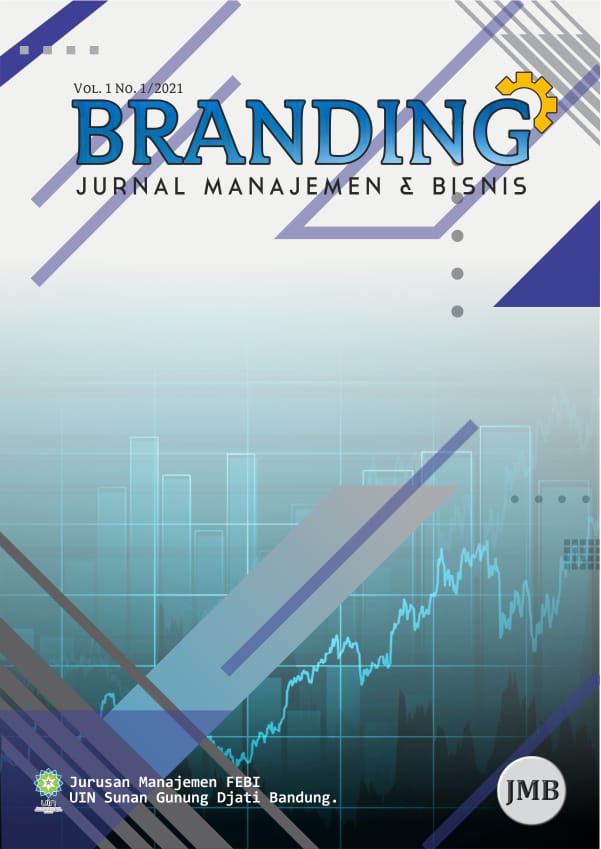REVITALIZING RETAIL: HOW INNOVATIVE MARKETING STRATEGIES CAN TRANSFORM CONSUMER ENGAGEMENT AND ATTRACT INVESTMENT
DOI:
https://doi.org/10.15575/jb.v3i1.35117Keywords:
Innovative Marketing Strategy, Consumer Engagement, Retail Investment.Abstract
References
Abreu, M., & Mendes, V. (2020). Do individual investors trade differently in different financial markets?. The European Journal of Finance, 26(13), 1253-1270.
Baran, T. (2022). COVID effect on retailing: a study on consumers’ retailer preferences during economic recession periods: evidence from Turkey as a predominantly Muslim society. Journal of Islamic Marketing, 13(10), 2193-2207.
Blankespoor, E., deHaan, E., & Marinovic, I. (2020). Disclosure processing costs, investors’ information choice, and equity market outcomes: A review. Journal of Accounting and Economics, 70(2-3), 101344.
Chen, Y., Mandler, T., & Meyer-Waarden, L. (2021). Three decades of research on loyalty programs: A literature review and future research agenda. Journal of Business Research, 124, 179-197.
Corrado, C., Haskel, J., Jona-Lasinio, C., & Iommi, M. (2022). Intangible capital and modern economies. Journal of Economic Perspectives, 36(3), 3-28.
Eliza, E. (2023). Human Resource Management Strategies to Improve Performance in the Digital Era. Implikasi: Jurnal Manajemen Sumber Daya Manusia, 1(2), 132-139.
Falchetta, G., Michoud, B., Hafner, M., & Rother, M. (2022). Harnessing finance for a new era of decentralised electricity access: A review of private investment patterns and emerging business models. Energy Research & Social Science, 90, 102587.
Gerea, C., Gonzalez-Lopez, F., & Herskovic, V. (2021). Omnichannel customer experience and management: An integrative review and research agenda. Sustainability, 13(5), 2824.
Gligor, D., & Bozkurt, S. (2022). The impact of perceived brand interactivity on customer purchases. The mediating role of perceived brand fairness and the moderating role of brand involvement. Journal of Product & Brand Management, 31(1), 96-109.
Grewal, D., Gauri, D. K., Roggeveen, A. L., & Sethuraman, R. (2021). Strategizing retailing in the new technology era. Journal of Retailing, 97(1), 6-12.
Ilham, R. N., Sinta, I., & Sinurat, M. (2022). The Effect Of Technical Analysis On Cryptocurrency Investment Returns With The 5 (Five) Highest Market Capitalizations In Indonesia. Jurnal Ekonomi, 11(02), 1022-1035.
Ismayani, I., Muchtar, M., & Adinugroho, I. (2023). Optimizing Customer Satisfaction Through Relationship Marketing: A Case Study of PT Pegadaian Mamuju Branch. Jurnal Ekonomi, 12(04), 71-77.
Keiningham, T., Aksoy, L., Bruce, H. L., Cadet, F., Clennell, N., Hodgkinson, I. R., & Kearney, T. (2020). Customer experience driven business model innovation. Journal of Business Research, 116, 431-440.
Kryshtanovych, S., Prosovych, O., Panas, Y., Trushkina, N., & Omelchenko, V. (2022). Features of the Socio-Economic Development of the Countries of the World under the influence of the Digital Economy and COVID-19. International Journal of Computer Science and Network Security, 22(1), 9-14.
Lysenko-Ryba, K., & Zimon, D. (2021). Customer behavioral reactions to negative experiences during the product return. Sustainability, 13(2), 448.
Ostovan, N., & Nasr, A. K. (2022). The manifestation of luxury value dimensions in brand engagement in self-concept. Journal of Retailing and Consumer Services, 66, 102939.
Piligrimienė, Ž., Žukauskaitė, A., Korzilius, H., Banytė, J., & Dovalienė, A. (2020). Internal and external determinants of consumer engagement in sustainable consumption. Sustainability, 12(4), 1349.
Raghunandan, A., & Rajgopal, S. (2022). Do ESG funds make stakeholder-friendly investments?. Review of Accounting Studies, 27(3), 822-863.
Rhee, C. E., & Choi, J. (2020). Effects of personalization and social role in voice shopping: An experimental study on product recommendation by a conversational voice agent. Computers in Human Behavior, 109, 106359.
Ribeiro, P. R., Batista, P., Mendes-Palma, F., Pintado, M., & Oliveira-Silva, P. (2023). Consumers’ Engagement and Perspectives on Sustainable Textile Consumption. Sustainability, 15(22), 15812.
Sheng, J., Amankwahâ€Amoah, J., Khan, Z., & Wang, X. (2021). COVIDâ€19 pandemic in the new era of big data analytics: Methodological innovations and future research directions. British Journal of Management, 32(4), 1164-1183.
Teeny, J. D., Siev, J. J., Briñol, P., & Petty, R. E. (2021). A review and conceptual framework for understanding personalized matching effects in persuasion. Journal of Consumer Psychology, 31(2), 382-414.
Vaish, S., Badruddin, A., & Hussain, F. (2024). Study of Factors Affecting Investors Perception towards Mutual Fund in Lucknow. Educational Administration: Theory and Practice, 30(4), 6682-6690.
Wang, Y., Xue, X., & Guo, H. (2022). The sustainability of market orientation from a dynamic perspective: the mediation of dynamic capability and the moderation of error management climate. Sustainability, 14(7), 3763.
Yap, S. F., Xu, Y., & Tan, L. (2021). Coping with crisis: The paradox of technology and consumer vulnerability. International Journal of Consumer Studies, 45(6), 1239-1257.
Yim, M. Y. C., Kim, Y. K., & Lee, J. (2021). How to easily facilitate consumers’ mental simulation through advertising: the effectiveness of self-referencing image dynamics on purchase intention. International Journal of Advertising, 40(5), 810-834.
Yusuf, M., & Matiin, N. (2022). Analysis of the Effect of the Marketing Mix on Purchasing Decisions. International Journal of Economics and Management Research, 1(3), 177-182.
Downloads
Published
How to Cite
Issue
Section
Citation Check
License

This work is licensed under a Creative Commons Attribution-ShareAlike 4.0 International License.
















